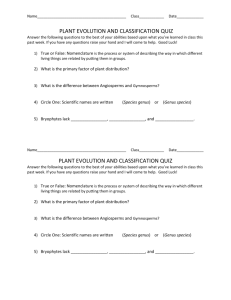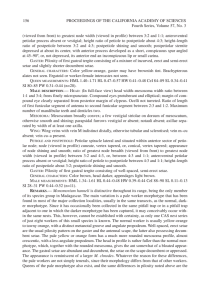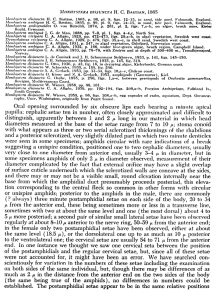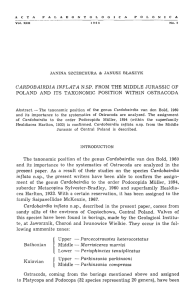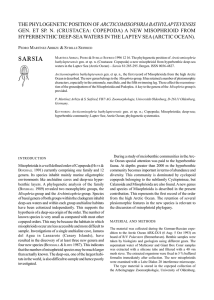MORPHOLOGY AND TAXONOMY OF FOUR SPECIES OF THE MARINE BACTERIASTRUM ADRIATIC SEA
advertisement
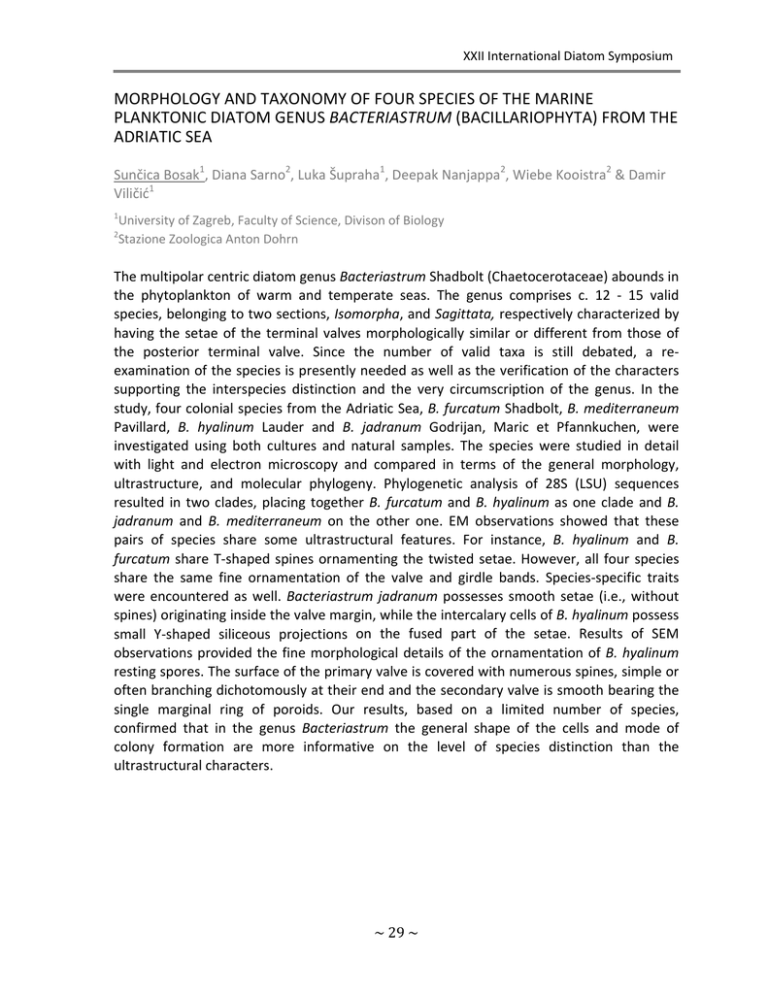
XXII International Diatom Symposium MORPHOLOGY AND TAXONOMY OF FOUR SPECIES OF THE MARINE PLANKTONIC DIATOM GENUS BACTERIASTRUM (BACILLARIOPHYTA) FROM THE ADRIATIC SEA Sunčica Bosak1, Diana Sarno2, Luka Šupraha1, Deepak Nanjappa2, Wiebe Kooistra2 & Damir Viličić1 1 University of Zagreb, Faculty of Science, Divison of Biology Stazione Zoologica Anton Dohrn 2 The multipolar centric diatom genus Bacteriastrum Shadbolt (Chaetocerotaceae) abounds in the phytoplankton of warm and temperate seas. The genus comprises c. 12 ‐ 15 valid species, belonging to two sections, Isomorpha, and Sagittata, respectively characterized by having the setae of the terminal valves morphologically similar or different from those of the posterior terminal valve. Since the number of valid taxa is still debated, a re‐ examination of the species is presently needed as well as the verification of the characters supporting the interspecies distinction and the very circumscription of the genus. In the study, four colonial species from the Adriatic Sea, B. furcatum Shadbolt, B. mediterraneum Pavillard, B. hyalinum Lauder and B. jadranum Godrijan, Maric et Pfannkuchen, were investigated using both cultures and natural samples. The species were studied in detail with light and electron microscopy and compared in terms of the general morphology, ultrastructure, and molecular phylogeny. Phylogenetic analysis of 28S (LSU) sequences resulted in two clades, placing together B. furcatum and B. hyalinum as one clade and B. jadranum and B. mediterraneum on the other one. EM observations showed that these pairs of species share some ultrastructural features. For instance, B. hyalinum and B. furcatum share T‐shaped spines ornamenting the twisted setae. However, all four species share the same fine ornamentation of the valve and girdle bands. Species‐specific traits were encountered as well. Bacteriastrum jadranum possesses smooth setae (i.e., without spines) originating inside the valve margin, while the intercalary cells of B. hyalinum possess small Y‐shaped siliceous projections on the fused part of the setae. Results of SEM observations provided the fine morphological details of the ornamentation of B. hyalinum resting spores. The surface of the primary valve is covered with numerous spines, simple or often branching dichotomously at their end and the secondary valve is smooth bearing the single marginal ring of poroids. Our results, based on a limited number of species, confirmed that in the genus Bacteriastrum the general shape of the cells and mode of colony formation are more informative on the level of species distinction than the ultrastructural characters. ~ 29 ~





